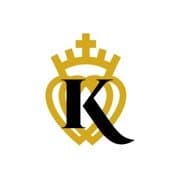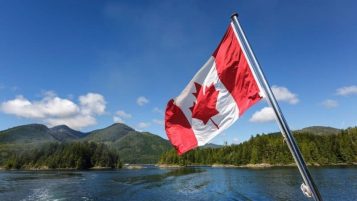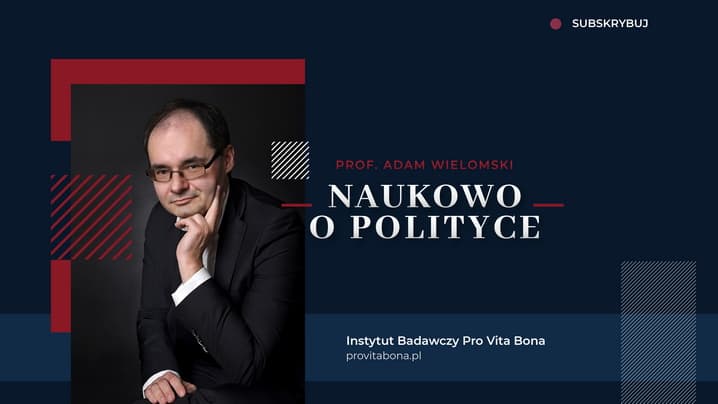“Canada One”
The Dominion of Canada was founded in 1867 as the result of a “compact” between two peoples of longstanding history, English and French Canada, whose respective heritages stretched back centuries. The Aboriginal peoples were included insofar as they had been traditionally considered to be under the special protection of the Crown. Canada was dominated by the Conservatives/Bleus of Macdonald and Cartier until 1896. In the federal election of that year, partly owing to the baneful execution of Louis Riel, French Quebec switched its vote en masse to the Liberals, led by Wilfrid Laurier. After 1896, most of the federal governments were Liberal, with only brief Conservative interludes. However, Canada was dominated by a “traditionalist-centrist” consensus in which all major parties shared. For example, the Co-operative Commonwealth Federation (CCF), while economically social democratic, was mostly socially conservative, viewing traditional nation, family, and religion as part of a pre-political consensus that they had no desire to challenge. Thus, the frequent Liberal victories had comparatively little impact on a society, politics, and culture dominated by the “traditionalist-centrist” consensus. Nevertheless, the long years spent out of power by the Conservative Party (from 1942 to 2003, the Progressive Conservative Party) tended to atrophy their political skills and steadily reduced the salience of traditionalism and conservatism in the country. The long years out of government prevented the Tory party from ever learning “the discipline of power”.
“Canada Two”
The federal election of 1963 was one of most critical in Canadian history. The staunch Tory, John Diefenbaker (who had been Prime Minister from 1957), faced the Liberal, career diplomat, and winner of the Nobel Peace Prize for his role in establishing United Nations peace-keeping, Lester B. Pearson. Diefenbaker had won a minority government in 1957, and one of the historically largest majorities in the federal Parliament in 1958, with the support of Quebec. As Canadian traditionalist philosopher George Parkin Grant has noted, one of the focuses of the 1963 election was the fight over whether to accept U.S. nuclear weapons on Canadian soil, which Diefenbaker opposed. Diefenbaker lost the election, while Pearson won a minority government (a plurality of seats in the House of Commons). Pearson was to a large extent an archetypical liberal, filled with a reforming zeal. One of his most important acts was the change of the Canadian flag from the Red Ensign to the Maple Leaf Flag (dubbed “the Pearson Pennant”). Although the importance of the change has frequently been underrated in Canada, many political thinkers have interpreted the change of a country’s flag as a compelling symbol of “regime-change”. Arguably, this was ultimately proven in the case of Canada as well. The conclusion of this crucial phase in the political history of Canada is clearly the celebration of the Centennial of Confederation in 1967, dominated by the spirit of the times – progressive thinking was in the air, “forward-looking” ideas were at the heart of Expo ’67 in Montreal. Canada was literally the changing world’s stage in this pivotal year.
Upheaval
Sometimes called “the philosopher-king” or “the Northern Magus,” Trudeau arrived on the scene in a big way in the federal election of 1968, characterized as one of “Trudeaumania”. Winning virtually every seat in Quebec, plus about half of the seats in English-speaking Canada, Trudeau easily formed a majority government. An unabashed “progressive,” he governed in an “activist”, “transformational” way, imposing his wide-reaching agenda on the federal government, and the country as a whole. 1968 has been seen by historians as a pivotal year – a year of major cultural shifts in European and North American countries as well as around the world – and it marked the beginning of a fundamental shift in the Canadian polity – traditional Canada was dying.
The Ascent of Progressivism
Trudeau barely won the 1972 election against a strong challenge from Progressive Conservative leader Robert Stanfield. Trudeau’s campaign was assisted by a sympathetic media willing to ridicule Stanfield, and the rise of sharp “American-style” political campaign management reaching a crescendo in the Liberal Party. The New Democratic Party (NDP), the much-different successor to the CCF, supported the Liberal minority government between 1972-1974. Trudeau won a majority government in 1974, again based on rock-solid support from Quebec. In 1979, Joe Clark (who had been P.C. leader since 1976) won a minority government (a plurality of seats in the House of Commons). However, he ineptly mishandled his nine months in office, and the Liberals won another majority in 1980 (after the P.C. government had fallen to a non-confidence vote in the House of Commons). Trudeau interpreted his victory as a prologue to the ultimate culmination of what critics have later called “the Trudeau revolution.” In 1982, Trudeau brought in the Charter of Rights and Freedoms, which both its supporters and critics have sometimes termed a “coup d’état”. The Charter of Rights and Freedoms effectively enshrined nearly all of Trudeau’s essentially liberal ideals as the highest law of the land. It is hard to think of any country that has been impacted as decisively by one person, as has Canada by Pierre Trudeau.
The Failure of Conservatism
In the challenge to Joe Clark’s leadership in 1983 and the run-up to the 1984 election, Brian Mulroney, by virtue of a few strong pronouncements, let the mantle of being a “right-winger” fall on him. However, as it turned out, he was viscerally mostly a liberal. The Progressive Conservative majorities of 1984 and 1988 ended up being a “defeat in victory” or a “false dawn” for the Canadian Right. Insofar as he enacted the Canada-U.S. Free Trade Agreement, he was carrying out a longstanding Liberal policy objective, which traditionalist Conservatives in Canada had long opposed. He also precipitously raised the immigration numbers in Canada to a quarter-million persons a year (whereas they had fallen to 54,000 in Trudeau’s last year in office). Mulroney’s betrayal of “small-c conservatives” undoubtedly played a part in the birth of the Reform Party in November 1987. In the 1993 federal election, the Reform Party won 52 seats, while the Bloc Quebecois (which had arisen as a consequence of the failure of the Meech Lake Accord and Charlottetown Agreements) won 54 seats. The PCs were reduced to two seats, while the Liberals under Jean Chretien won a majority in the federal Parliament.
The Reform Party and Liberal Austerity
The Reform Party faced a climate of unrelenting media and institutional hostility — especially in the 1996 controversy over the extension of anti-discrimination protections to gays and lesbians. Part of the Liberal Party’s strategy in the 1990s (in the wake of the collapse of Soviet Communism), to draw the sting of Reform Party criticism, was to adopt so-called fiscal or economic conservatism. The extent of the Liberal austerity measures against the mass of ordinary Canadians included: not rescinding the Goods and Services Tax, as they had explicitly promised to do; introducing Unemployment Insurance reforms, which drastically reduced benefits; the establishment of Canada Pension Plan reforms, which substantially raised the amount of contributions that have to be paid into the program; and also the Old Age Pension and Old Age tax-exemption claw-backs – which kick in at a relatively modest income threshold. It could also be argued that the Liberal Party, especially in the 1990s, has colluded with big banks, big insurance companies, and other major corporations, to the disadvantage of the broader Canadian public.
The Dawn of the Canadian Alliance
Preston Manning launched the United Alternative initiative in 1998. This culminated in the creation of the Canadian Alliance – whose full, official name was the Canadian Reform-Conservative Alliance. The initiative failed to achieve its ultimate goal – a merger with the federal Progressive Conservative party – largely because of the intransigence of one man – federal P.C. leader Joe Clark. In 2000, Stockwell Day was selected leader of the Canadian Alliance. Although he began well, he was increasingly sandbagged by the accusation that he represented “Christian fundamentalist extremism”, as well as being seen as just another “Albertan” from an Alberta centred party. The November 2000 election saw a continued refinement of the “hardball” political manipulations of another era (Davey-Coutts) carried out by the Liberal Party. In 2001, Stockwell Day was essentially destroyed by a generally unreceptive at best, mockingly hostile at worst, media; a negative strategy of ad hominem attacks by the Liberal Party; and, the perennial “conservative party” curse of caucus dissent/rebellion. The ensuing Canadian Alliance leadership selection process of 2002 was won by Stephen Harper.
A United Right
The merger between the Canadian Alliance (under Stephen Harper) and the federal Progressive Conservatives (under the leadership of Peter MacKay), was formally announced on October 16, 2003, and finalized by December 2003. This move, coming after decades of division and infighting for the politically organized Canadian Right, appeared to be a bright way forward. In March 2004, Stephen Harper was selected leader of the reconstituted Conservative Party. The June 2004 election was perhaps one of the most critical in Canadian history, and was supposed to represent the culmination of the now united political Right in its attempt to at least be a voice heard in the national debate, and on a practical level to assume a leadership role by achieving political power. Nevertheless, Stephen Harper essentially flopped – considering that the Liberals were highly vulnerable, especially over the politically sensitive (especially in Quebec) financial scandal known as “The Sponsorship Scandal” or “Adscam”. The Liberals managed to win a minority government (a plurality of seats in the House of Commons) in 2004, but were voted down in the federal House of Commons in November 2005. In the ensuing January 2006 federal election, Harper won a minority government. By sticking to centrist policies, Harper continued in power until 2008, when he called an election himself. He won a strengthened mandate, but a majority still eluded him. Finally, the Conservative government was voted down in the House of Commons in 2011. However, Harper was finally able to win a majority in the May 2011 election.
Failure in Success
The Conservative majority government of 2011-2015 represented one of the comparatively few, post-1896 moments of conservative electoral triumph in Canadian history. However, Harper timidly continued with centrist policies. He could have helped social conservatives considerably, even without touching same-sex marriage and abortion rights – for example, by introducing pro-family tax policies. Harper was demonized as “far right” and a “dictator” whereas his policies rarely challenged the “Trudeau Liberal consensus” of Canada – or what some have called “the Trudeaupia”. He also failed to properly vet appointments to the Senate, with the result that a highly damaging scandal erupted there. It should be well noted that it was a scandal over administrative, not substantial policy issues. There was a wave of anti-Harper books published during his Prime Ministership, and especially as the date of the 2015 election neared.
The Cult of the Leader (Version 2.0)
In the October 2015 federal election, Justin Trudeau (Pierre Elliott Trudeau’s son) won a strong majority. This was a signal to sweep away whatever fragmentary conservative measures Stephen Harper might have been able to introduce in 2011-2015. In the October 2019 election, the Liberals won a strong minority government, despite various scandals. They have been propped up by the NDP, which is even further left. Justin Trudeau has made various pronouncements indicative of his progressivism, such as his praise of the Chinese Communist dictatorship, and his proclamation that Canada is a “post-national state” and that there is “no core [Canadian] identity”. Indeed, Justin Trudeau has exemplified the “progressive” outlook in Canada. The 2018 federal budget was characterized by a deep social radicalism. Yet at the same time, Justin Trudeau has introduced few economically radical measures, and is looking out well for the interests of the one percent, most of whom are in fact liberals. The Liberal Party has usually been the party of the very biggest business in Canada.
Defining the Hegemony of Progressivism
One of the central reasons for the continuing failure of the Canadian Right since the 1960s is the ongoing establishment of vast liberal-leaning media, juridical, academic, educational, bureaucratic, and corporate structures – a nexus of interests which certain American and European critics have called “the managerial-therapeutic regime” – which could be characterized as socially liberal and economically conservative. There is also the fact that “North American” pop-culture is the primary “lived cultural reality” for most people in Canada, which tends to reinforce socially liberal, consumerist/consumptionist, and antinomian attitudes, especially among the young. Unlike in most other Western countries, where countervailing factors of various kinds exist to the hegemony of the managerial-therapeutic regime, current-day Canada is probably an example of such a managerial-therapeutic system in its “purest” form.
Some of these countervailing factors in the United States include such things as the far greater saliency of the military, the far greater presence of organized religion (both in regard to fundamentalist Protestants and traditionalist Catholics), homeschooling as a major social trend, the existence of probably hundreds of more traditional-leaning private colleges, and a large network of right-leaning think-tanks and publications – which together are part of what some have called the “Right Nation.” At the same time, the United States has a more robust tradition of independent-minded, left-wing, anti-corporate, ecological, or agrarian dissent, such as that typified by Ralph Nader, Christopher Lasch, Rachel Carson, Helen and Scott Nearing, and Wendell Berry.
It could be argued that social, political, cultural, and economic life in Canada – lacking, in fact, either an authentic Right or Left — has therefore become the least subject to popular will and democratic input. Indeed, it could be called “post-democratic.” The lack of robust democratic participation and input in Canada should be of concern to theorists across the political spectrum. Insofar as the system maintains itself through massive “prior constraint” against a very broad array of ideas, beliefs, and opinions, its pretense to be upholding democracy is questionable. Such a profound lack of equilibrium is radically harmful to a more “ideal-typical” form and exercise of democracy.
A Lack of Articulation
Over the last five-and-half decades, the Canadian Right has conclusively failed to articulate a “counter-ethic” to the now-prevalent “Liberal idea of Canada” and is now seemingly on the fast track to extinction in the Canadian polity. There are a number of structural and cultural political problems in which the Canadian Right has been and is embroiled, most notably, their lack of appeal to Quebec. There is the long-term “Quebec problem” of the Canadian Right. There is also the lack of appeal to older immigrant groups (the so-called “white ethnics”) – who might have been a natural constituency for them. There is also their lack of appeal to newer immigrant groups (the so-called “visible minorities”) – although there is probably little they could do to increase their appeal there. The Canadian situation is markedly different from the situation in the United States, especially in regard to the extent of highly-principled “minority conservatives” in both countries.
Because of the ongoing decline of conservative thought in Canada, there are only sporadic attempts to ever articulate a “counter-ethic” to the prevalent “Liberal idea of Canada.” Such attempts are especially rare among currently-active conservative politicians.
There is clearly, furthermore, an astronomical inequality of financial resources as between left-liberals and substantive conservatives in Canada. Given the direction of development of historical, social, cultural, and economic processes in Canada over the last five-and-a-half decades, and the various factors mentioned above – the incoherence of the articulation of a “counter-ethic”, the hardening of a once-robust parliamentary democracy into a “managerial-therapeutic regime,” the very low profile of any possibly competing counter-valent power-centres such as the military and churches, the increasing centralization of the polity in the federal government, the prevalence of “North American” pop-culture with its amplification of socially-liberal, consumerist, and antinomian attitudes, and the various structural and cultural political problems for the Canadian Right — notably their lack of appeal to Quebec and “white ethnics”, and the fewness of highly-principled “minority conservatives” in Canada – it could be concluded that the Canadian Right is approaching extinction in Canada. The future of Canadian politics is therefore very likely to move in the direction of a “post-democratic” and de facto “one-party” system – which will be overwhelmingly socially liberal and economically conservative.
Just How Liberal is Canada Today?
It should be pointed out that Canada today may be seen as combining the most liberal aspects of America and Europe — indeed, it may be world’s most liberal society. Like some European countries such as the Netherlands, it is extremely socially-liberal, as demonstrated by the Canadian federal government’s total acceptance of „same-sex marriage.” Although a vote on the issue took place in the Federal Parliament in 2005, it was with direct referral to the Canadian Supreme Court. What conservative critics call „judicial activism” is in Canada a comparatively late but now flourishing development, which only really got underway with the introduction of the Charter of Rights and Freedoms (1982) into the Canadian Constitution. The Charter, clearly a left-liberal rather than classical liberal document, essentially enshrined virtually the entire agenda of Pierre Elliott Trudeau (Canada’s left-leaning Liberal Prime Minister from 1968-1984, except for nine months in 1979-1980) as the highest law of the land. After Brian Mulroney’s huge Progressive Conservative majorities of 1984 and 1988 — whose record in regard to social and cultural conservatism was indeed abysmal — Canada’s federal Liberal Party (headed by Jean Chretien) comfortably won the elections of 1993, 1997, and 2000. On the other hand, unlike some European countries, Canada is characterized by very high rates of immigration, and it has whole-heartedly embraced multiculturalism, affirmative action (called „employment equity” in Canada), and diversity with a startling degree of unidirectional intensity. Canada’s official immigration numbers are more than twice as large as those of the United States — per capita — and are probably among the highest in the world. With a population now reaching about 38 million persons, Canada had been receiving every year about a quarter-million immigrants. (The Liberals have recently raised the numbers to 300,000, and, in coming years, to over 400,000 a year.)
At the same time, Canada has now embraced some of the more negative aspects of American society — such as the excesses of pop-culture, the trend to political-correctness, and growing litigiousness. However, it lacks many aspects of America that may temper the aforementioned trends. In Canada, for example, the government accounts for about half of the GDP. (In contrast to about forty percent in the United States.) Taxes are very high, relative to the United States. The Canadian medical system is stringently socialized to an extent unheard of in the United States. Canada’s gun control laws are also extremely strict. Unlike the United States, fundamentalist Christianity plays virtually no role in Canada. The debate about abortion and many other social issues is considered effectively closed. In another extreme contrast to the United States, Canada has virtually no military (the entire armed forces, including army, navy, air force, and reserves, number about 92,600 men and women) and there is major disdain throughout much of Canadian society (and especially in elite opinion) towards the military. Canada’s security provisions, refugee-policy, and control of its borders are also extremely lackadaisical.
Canadians appear to be characterized both today and in their earlier history by an unusual deference to governmental authority. Before 1965, Canada was probably a substantively more conservative society than the United States, but now, when the paradigm at the top has been fundamentally altered — in the wake of the „Trudeau revolution” — most Canadians are willing to follow the new, politically-correct line from Ottawa. There is virtually no heritage of independence, self-reliance, or belief in rambunctious free speech in Canada. Indeed, Canadian officials point proudly to their laws against „hate-speech” as highly necessary. They say they do not have „the American hang-ups” about restricting freedom of speech.
What may be concluded from the combination of points made above is that right-of-centre positions are rather rarely seen or heard in Canada (except perhaps in the Western province of Alberta). It could be argued that, given the left-liberal predominance in the Canadian media (especially in the taxpayer-funded CBC), in the education system (from daycare to universities), in the judiciary and justice system, in the government bureaucracies, in so-called high culture (typified by government-subsidized „CanLit”), in North American pop-culture and „youth culture,” in the big Canadian banks and corporations, and (on most issues) in the leaderships of the main churches in Canada, any existing right-of-centre tendencies are being continually ground down. There is also the panoply of special interest groups, who receive extensive government and corporate funding.
Routes to Revival
The Canadian Right will make little headway in the teeth of a hostile social, cultural, and political climate, unless it endeavours to give encouragement to the creation of some kind of infrastructures where more intellectual explorations of right-wing ideas and philosophies can take place in Canada. What is especially needed in Canada for conservatives is a broadly right-of-centre magazine which could serve a mobilizing role similar to the early years of National Review in the United States, as well as an academic outreach body along the lines of the Intercollegiate Studies Institute in the United States (which publishes scholarly quarterlies and books, as well as offering substantial scholarships). The ISI embodies a very reflective and serious conservatism that moves far beyond day-to-day policy issues and merely fiscal and economic conservatism (while not being explicitly tied to any one religion or denomination). Perhaps the social conservative think-tank Cardus could eventually evolve into serving a similar role in Canada. Today in Canada, there are numerous, left-wing, extra-parliamentary infrastructures, whose funding (most of which comes from the federal government) outweighs that of putatively right-wing infrastructures such as the National Citizens’ Coalition and the Fraser Institute (who rely strictly on private donations — and are almost entirely focussed on economic and fiscal issues) by astronomical factors. The effectiveness of these left-wing infrastructures has contributed to the huge intellectual influence of the New Democratic Party (Canada’s social democratic party) particularly on the Liberal Party. It may be remembered that Trudeau was a former NDP member, and some have indeed suggested that he „hijacked” a somewhat more traditionalist and centrist Liberal Party and moved it in a radical direction. The extent to which large numbers of persons in Canadian society (especially in the intellectual classes) are utterly captivated by and beholden to ideas of left-wing provenance cannot be overestimated. It is only the building up of infrastructures of a serious intellectual Right in Canada that could make a difference in this regard.
“Canada Three”
It is suggested that the Canadian Right look forward to a so-called “Canada Three”, i.e.,
a synthesis of the best aspects of Canada One (traditional Canada), and Canada Two (liberal Canada). Some of the possible contours of “Canada Three” would be a more decentralized federalism – which will also make it easier for Quebec to remain in Canada.
Balance: Why Canada Needs a Right
The current-day Canadian situation — of near-total left-liberal intellectual hegemony, of very little authentic academic or journalistic debate, and of little hope that a substantively conservative party will ever unseat the Liberals at the federal level — cannot be described as offering prospects for a truly humane future for Canada. There is certainly no intellectual balancing of Left and Right, and very little possibility of alternation at the federal level between left-leaning and substantively conservative parties, in Canada today. A Conservative electoral triumph – should it ever occur in such a difficult environment – is likely to be overwhelmed by ferocious infrastructural opposition – much in the same way that Mulroney’s huge majority in 1984 was sandbagged. The ongoing, decades-long, “prior constraint” against the so-called Centre-Right Opposition coming to or ever exercising any meaningful degree of power in Canada – fundamentally contradicts Canada’s parliamentary and democratic ideals, as well as betraying its history.
Mark Wegierski



